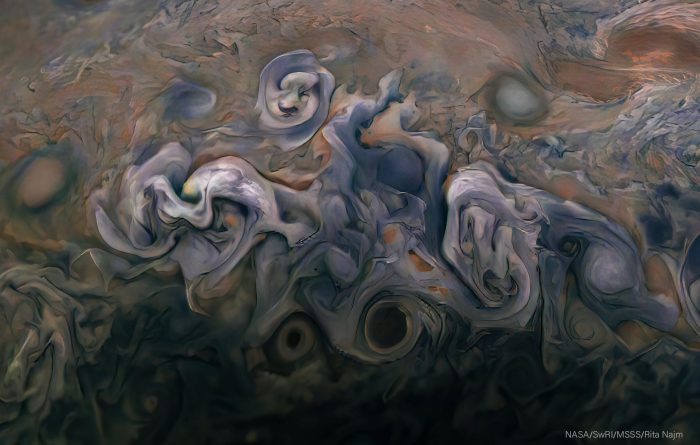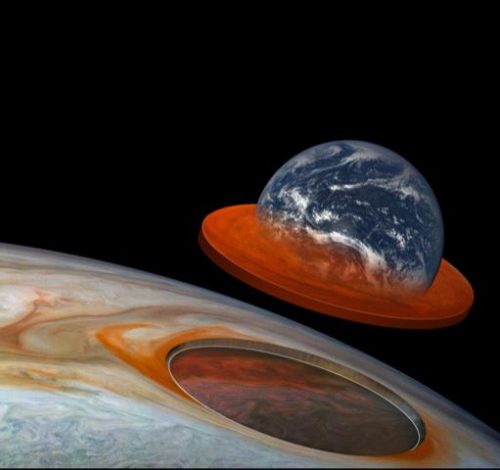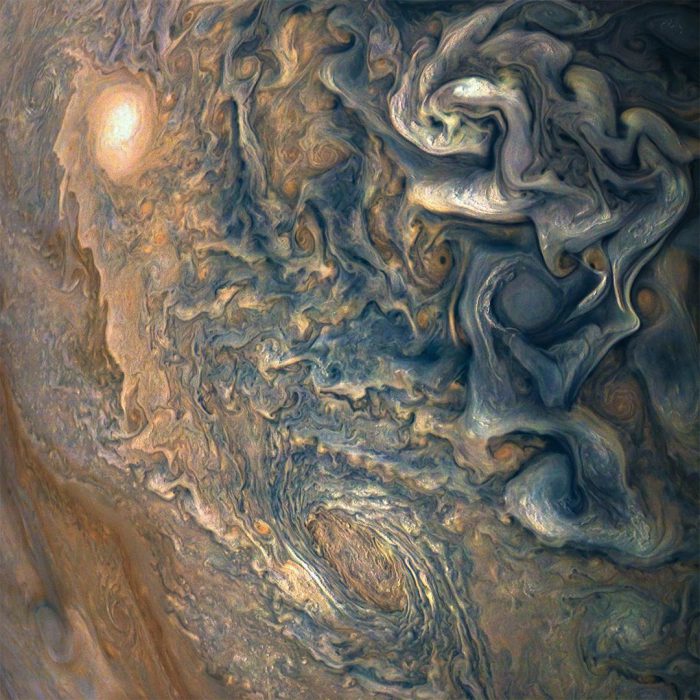Right now, everyone is writing about the images being captured by the James Webb Space Telescope. Including us!
And really, who can be blamed for that? These new images are giving us a window into the deep past of the entire universe. They search billions of years into the past—and with a kind of clarity we’ve never seen before.
That said, sometimes all of this deep space hubbub can blind us to a simple fact. We’ve got a lot of impressive stuff right here in our own solar system.
Some great examples of this are the photos being taken by Juno, a probe that has been orbiting Jupiter since July of 2016. For six years now, it has been making a catalogue of beautiful photos of all angles of the biggest planet around. On its 43rd flyby (orbit), it sent some pictures of the north pole (top) of Jupiter to NASA that have to be seen to be believed!
Swirling and twirling

A 2020 picture of Jupiter doing what it does best. Get super swirly! (NASA/JPL-Caltech/SwRI/MSSSImage processing: Rita Najm © CC BY)
As a gas giant planet, Jupiter does not have any solid ground upon which to land. (Not that we could ever reach it, anyway—the atmosphere is too deep and thick!) Instead, the world is an unbelievable mass of endlessly moving storms.
The most famous of these storms is the one known as the Great Red Spot—an enormous storm just south of the planet’s equator (middle) that has existed for at least 350 years! The storm is so large, the entire Earth could fit inside it. See?

A computer image showing how small Earth is compared to Jupiter ... and how well it fits inside the Great Red Spot! (JunoCam Image data: NASA/JPL-Caltech/SwRI/MSSSJunoCam Image processing by Kevin M. Gill (CC BY)Earth Image: NASA)
But as eye-catching as that storm is, it has nothing on the polar regions. These areas are full of a countless collection of swirling, twirling storms. They dot the region like spots on a leopard—even though each of them alone would be many times larger than any storm on Earth.
According to NASA, each one is around 50 kilometres (30 miles) in height and would be many hundreds of kilometres across.
Take a look for yourself at the dizzying storms as seen by Juno. How many can you count?

That is one amazing picture! (NASA/JPL-Caltech/SwRI/MSSS; Image processing by Brian Swift)
 A 2018 image of Jupiter's northern hemisphere taken by the Juno space probe. Wait until you see the latest image it has taken for us! (NASA/JPL-Caltech/SwRI/MSSS/Gerald Eichstadt/Sean Doran © CC NC SA)
A 2018 image of Jupiter's northern hemisphere taken by the Juno space probe. Wait until you see the latest image it has taken for us! (NASA/JPL-Caltech/SwRI/MSSS/Gerald Eichstadt/Sean Doran © CC NC SA)









